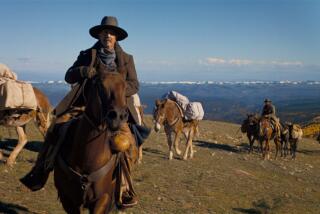Between Day and Dreams
- Share via
To Rod Serling, it was the shadowy tip of reality, the land of the bizarre and unexplainable. But before he unlocked the door to that other dimension and invited us in, “the twilight zone” was a term used mostly by pilots to describe the low-lit horizonless sky after sunset.
Within weeks of the 1959 television debut of “The Twilight Zone,” the phrase swept through the language with a new, more universal meaning. Suddenly, the zone was an actual place, a land between fantasy and reality, an uncharted landscape of the imagination.
“In the latter half of the 20th century, the term became a common part of the vocabulary for everyone from boxers to politicians,” says Marc Scott Zicree, author of “The Twilight Zone Companion” (Silman-James Press, 1999). “Suddenly there was a phrase that matched a whole generation’s feelings of alienation and altered states of mind.”
For Zicree personally, the twilight zone represents “the state many of us live in most of the time--an emotional intersection of deja vu and longing. It is the place you go when you feel like an outsider and, once you get there, finally find out you belong.”
For Serling, that place was probably best described in the “Twilight Zone” episode “Walking Distance,” which first aired on Oct. 30, 1959. Starring Gig Young as a world-weary ad exec who returns to one of the happy summers of his boyhood, the story offered a hint of Serling’s longing for his idyllic childhood.
At the end of the episode, Young is ordered back to his adult life. “Only one summer to a customer,” his father tells him.
Unless, of course, you’re in the twilight zone.
More to Read
The biggest entertainment stories
Get our big stories about Hollywood, film, television, music, arts, culture and more right in your inbox as soon as they publish.
You may occasionally receive promotional content from the Los Angeles Times.









